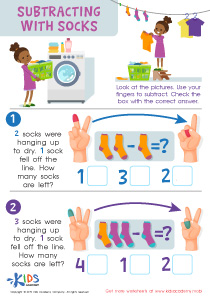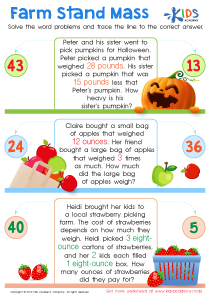Online Area and Perimeter Word Problems Worksheets for Grade 3
3 filtered results
-
From - To
Unlock the world of geometry with our Area and Perimeter Word Problems worksheets, perfectly tailored for Grade 3 students. These engaging school online printables are designed to reinforce understanding through practical application, helping young learners visualize and solve real-world spatial problems. Each worksheet combines clear instructions with a variety of fun scenarios, ensuring students grasp the concepts of area and perimeter in an enjoyable and effective manner. Ideal for both classroom use and home practice, these printables are essential tools for building foundational math skills. Dive into our collection and watch your child’s confidence and competence grow!
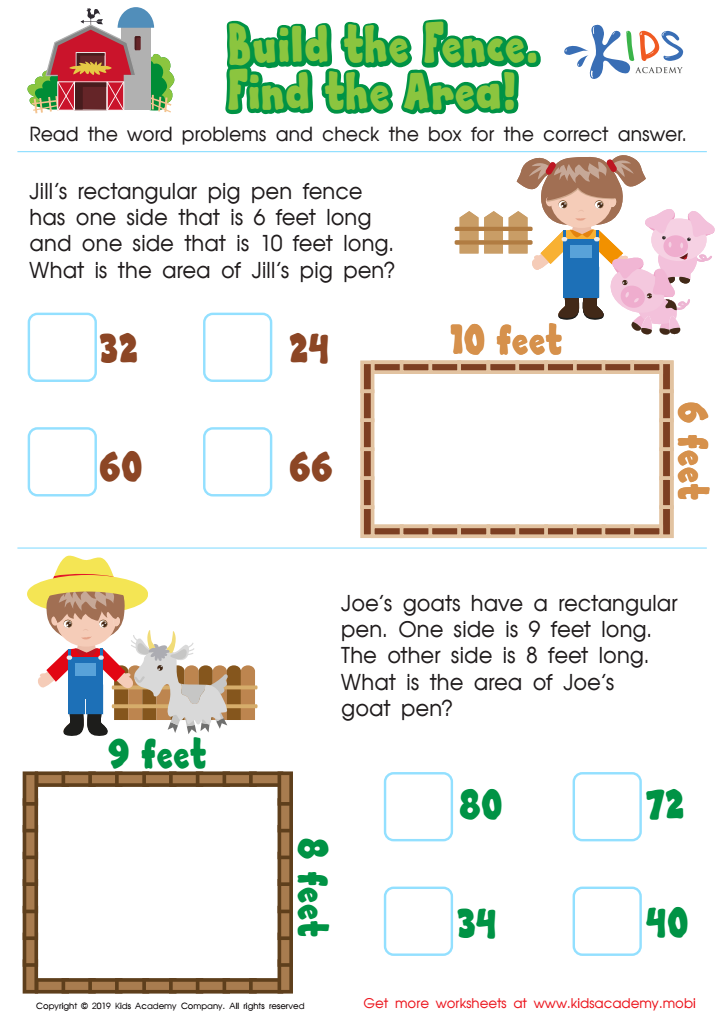

Build the Fence, Find the Area Worksheet
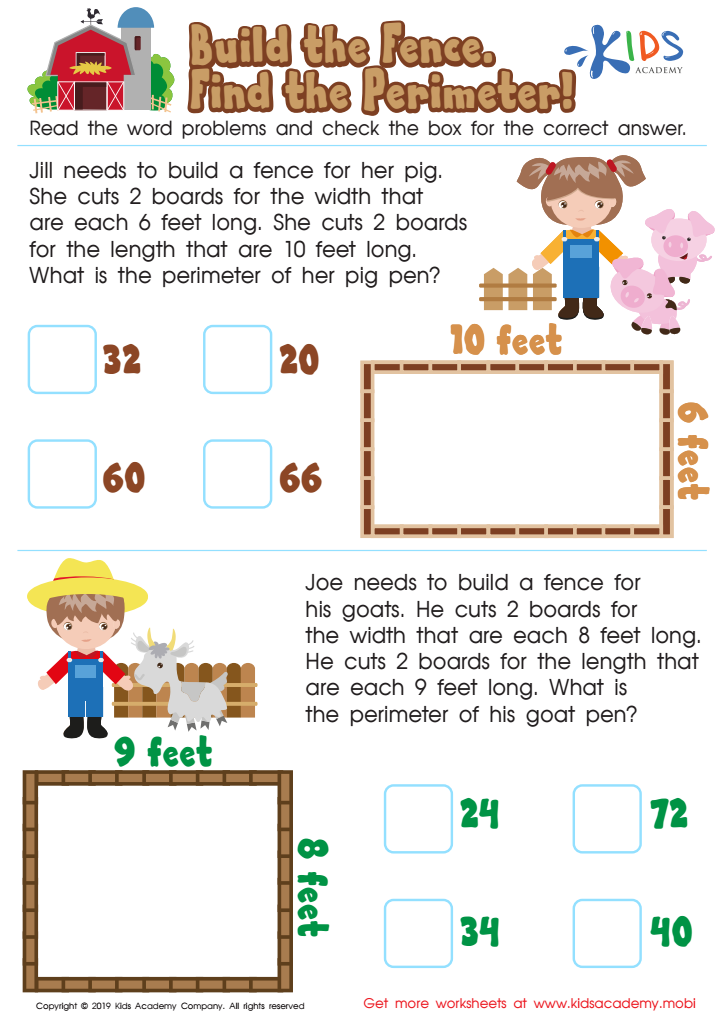

Build the Fence, Find the Perimeter Worksheet
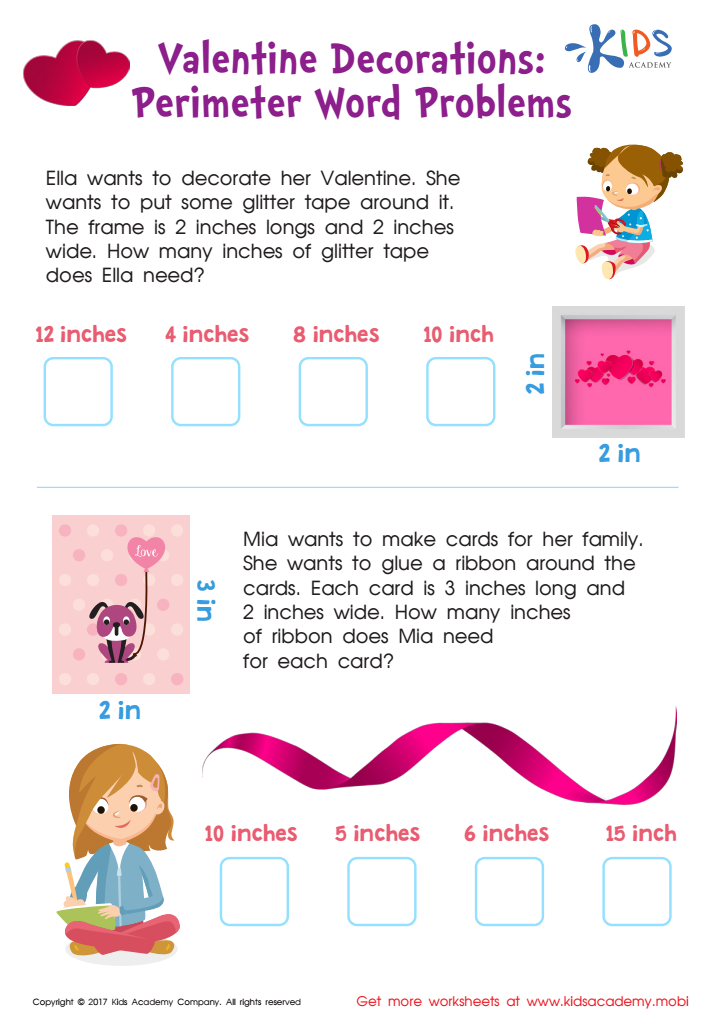

Perimeter Word Problems Worksheet
Why Worksheets on Area and Perimeter Word Problems Are Useful for Grade 3 Students
Mastering the concepts of area and perimeter sets a foundational skill that extends beyond mere arithmetic, touching various real-life applications. For Grade 3 students, delving into these concepts through school interactive worksheets can significantly enhance their understanding and retention. These worksheets, especially designed to tackle area and perimeter word problems, are not only educational but also engaging, making them an essential tool in a child’s mathematical education.
Builds Problem Solving Skills
Area and perimeter word problems require students to apply their mathematical knowledge to solve practical problems. This is vital as it transitions them from abstract thought to real-world application. School interactive worksheets designed for these topics challenge students to think critically and logically. For example, determining the perimeter of their classroom or calculating the area needed for a new playground. Such activities make learning relevant to their everyday experiences, thereby deepening their understanding and engagement.
Enhances Understanding of Geometry
Geometry is a significant branch of mathematics, and understanding how to calculate area and perimeter is one of its fundamentals. Through interactive worksheets, students can visualize geometric figures, enhancing spatial awareness and an intuitive understanding of shapes. This hands-on approach is particularly effective for Grade 3 students who benefit from seeing concepts in action through diagrams and illustrations provided in these worksheets.
Encourages Independent Learning
School interactive worksheets are typically structured in a way that allows children to work through problems at their own pace. This self-directed learning promotes independence as students navigate through different scenarios and figure out solutions on their own or with minimal guidance. This not only builds confidence but also instills a love for learning, as each worksheet can be tailored to meet the individual learning styles and needs of each student.
Supports Curriculum Requirements
In most educational systems, understanding the concepts of area and perimeter is a requirement by the end of Grade 3. Utilizing worksheets specifically focused on these topics ensures that students are adequately prepared for future mathematical concepts. Additionally, these worksheets can be aligned with curriculum standards, ensuring that all necessary topics are covered comprehensively, leaving no student behind.
Provides Assessment and Feedback
Another advantage of using school interactive worksheets is the immediate feedback provided. Many digital platforms allow for instant correction, helping children learn from their mistakes immediately. For teachers and parents, these worksheets provide a clear insight into a child’s strengths and areas that need improvement, facilitating targeted teaching and support.
Fun and Engaging
Let’s face it, learning through worksheets can sometimes be perceived as dull. However, school interactive worksheets for area and perimeter are designed to be fun and engaging. They often include colorful graphics, interactive elements, and sometimes even gamified learning experiences. These features help maintain a child's interest and can even stimulate excitement about tackling mathematical challenges. For example, a worksheet might include a storyline where the student needs to help a character fence their garden by calculating the perimeter, or design a room layout by working out the area of different furniture items. This form of context-based learning not only makes the exercise enjoyable but also enhances understanding by putting theoretical knowledge into a practical perspective.
Facilitates Collaborative Learning
While designed for individual use, school interactive worksheets can also be used to promote collaborative learning. Students can work in pairs or small groups to solve area and perimeter problems, encouraging them to discuss their thought processes and reasoning with peers. This collaboration fosters deeper understanding and allows students to learn from each other, recognizing different methods or strategies to solve the same problem.
Customizable and Adaptable
One of the key strengths of school interactive worksheets is their adaptability. Teachers can customize worksheets to cater to the varying proficiency levels within a classroom. They can introduce simpler problems for students who might be struggling, or more complex scenarios for advanced learners. This customization ensures that every student is challenged appropriately, promoting better learning outcomes.
Environmentally Friendly
In today's digital age, many school interactive worksheets are available in electronic formats, reducing the need for physical copies. This not only saves paper but also allows for flexibility in how and where students can complete their work. Digital worksheets can be accessed on various devices, making learning possible both in and out of the classroom.
In conclusion, school interactive worksheets on area and perimeter word problems offer a multitude of benefits for Grade 3 students. These tools not only make learning these essential mathematical concepts interesting and relevant but also support a range of educational strategies from reinforcing problem-solving skills to facilitating collaborative and independent learning. By incorporating these interactive worksheets into their teaching methods, educators can provide a more enriched, engaging, and effective learning experience for all students.

 Assign to the classroom
Assign to the classroom

